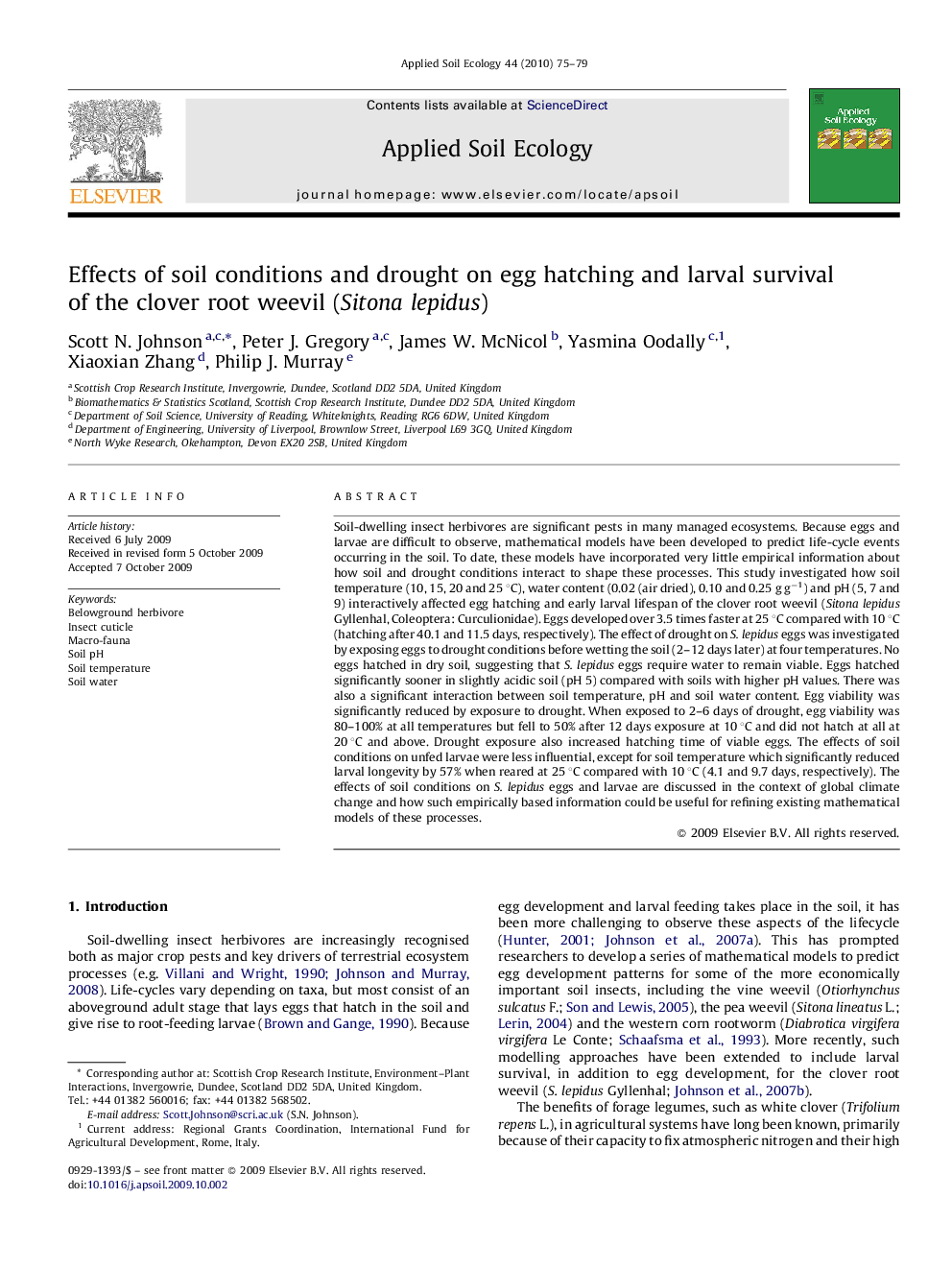| Article ID | Journal | Published Year | Pages | File Type |
|---|---|---|---|---|
| 4383038 | Applied Soil Ecology | 2010 | 5 Pages |
Soil-dwelling insect herbivores are significant pests in many managed ecosystems. Because eggs and larvae are difficult to observe, mathematical models have been developed to predict life-cycle events occurring in the soil. To date, these models have incorporated very little empirical information about how soil and drought conditions interact to shape these processes. This study investigated how soil temperature (10, 15, 20 and 25 °C), water content (0.02 (air dried), 0.10 and 0.25 g g−1) and pH (5, 7 and 9) interactively affected egg hatching and early larval lifespan of the clover root weevil (Sitona lepidus Gyllenhal, Coleoptera: Curculionidae). Eggs developed over 3.5 times faster at 25 °C compared with 10 °C (hatching after 40.1 and 11.5 days, respectively). The effect of drought on S. lepidus eggs was investigated by exposing eggs to drought conditions before wetting the soil (2–12 days later) at four temperatures. No eggs hatched in dry soil, suggesting that S. lepidus eggs require water to remain viable. Eggs hatched significantly sooner in slightly acidic soil (pH 5) compared with soils with higher pH values. There was also a significant interaction between soil temperature, pH and soil water content. Egg viability was significantly reduced by exposure to drought. When exposed to 2–6 days of drought, egg viability was 80–100% at all temperatures but fell to 50% after 12 days exposure at 10 °C and did not hatch at all at 20 °C and above. Drought exposure also increased hatching time of viable eggs. The effects of soil conditions on unfed larvae were less influential, except for soil temperature which significantly reduced larval longevity by 57% when reared at 25 °C compared with 10 °C (4.1 and 9.7 days, respectively). The effects of soil conditions on S. lepidus eggs and larvae are discussed in the context of global climate change and how such empirically based information could be useful for refining existing mathematical models of these processes.
